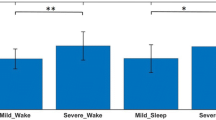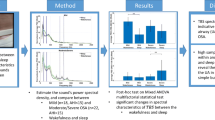Abstract
The aim of the study was to evaluate the effects of high altitude (HA) on the expiratory nasal sound spectra. The design consisted of a prospective analysis. The study group consisted of 24 otorhinolaryngologists and a student (2 females, 23 males) climber of the mountain of Kackar in Rize, a city located in northeastern Turkey. The elevation of the highest peak of the Kackar Mountain is 3,937 m (12,920 ft) and that of mountain plateaus at about 3,000 m (9,800 ft). Nasal sound spectral analysis was performed on 25 subjects at 700 and 3,937 m, respectively. We found that sound intensity (dB) at high frequency (Hf) was below 18.6 dB in the subjects at low altitude, while the results were found to be above 25.1 dB in the subjects at HA during expiration. A correlation was observed between the degree of HA and ‘Odiosoft-rhino’ findings at Hf intervals of the subjects. At the top of the mountain, the sound intensities at low and medium frequency were observed to be significantly lower than at low altitude (p < 0.05). We concluded that Hf values of HA were significantly higher than at low altitude because of nasal congestion and also narrowing of the cross-sectional area of the nasal airway. Nasal conchal and mucosal congestion affects airflow through the nasal cavity at HA, transforming it from a laminar pattern to turbulent flow. We found significant increases in the sound intensity level at Hf in the sound spectra at HA. Awareness of the impact of HA in nasal airflow is important in the diagnosis and treatment of nasal obstruction symptoms.

Similar content being viewed by others
References
Andersen I, Lundqvist GR, Jensen PL, Proctor DF (1974) Human response to 78-hour exposure to dry air. Arch Environ Health 29:319–324
Barry PW, Mason NP, O’Callaghan C (1997) Nasal mucociliary transport is impaired at altitude. Eur Respir J 10:35–37
Brundrett G (2002) Sickness at high altitude: a literature review. J R Soc Health 122:14–20
Charbonneau G, Sudraud M, Soufflet G (1987) Method for the evaluation of flow rate from pulmonary sounds. Bull Eur Physiopathol Respir 23:265–270
Chung SK, Son YR, Shin SJ, Kim SK (2006) Nasal airflow during respiratory cycle. Am J Rhinol 20:379–384
Cingi C, Erkan AN, Rettinger G (2009) Ear, nose, and throat effects of high altitude. Eur Arch Otorhinolaryngol 267(3):467–471
Cole P (2000) Biophysics of nasal airflow: a review. Am J Rhinol 14:245–249
Hackett PH, Roach RC (2001) High-altitude illness. N Engl J Med 345:107–114
Mairbaurl H, Weymann J, Mohrlein A et al (2003) Nasal epithelium potential difference at high altitude (4,559 m): evidence for secretion. Am J Respir Crit Care Med 167:862–867
Maran AGD, Lund VJ (1990) Clinical rhinology. Theime Medical Publishers, New York
Mason NP, Barry PW, Despiau G, Gardette B, Richalet JP (1999) Cough frequency and cough receptor sensitivity to citric acid challenge during a simulated ascent to extreme altitude. Eur Respir J 13:508–513
Mlynski G, Grutzenmacher S, Plontke S et al (2001) Correlation of nasal morphology and nasal respiratory function. Rhinology 39:197–201
Moin P, Bewley T (1994) Feedback control of turbulence. Appl Mech Rev 47:3–13
Philip G, Jankowski R, Baroody FM, Naclerio RM, Togias AG (1993) Reflex activation of nasal secretion by unilateral inhalation of cold dry air. Am Rev Respir Dis 48:1616–1622
Seren E (2005) Frequency spectra of normal expiratory nasal sound. Am J Rhinol 19:257–261
Seren E (2009) Effect of radiofrequency volumetric tissue reduction of inferior turbinate on expiratory nasal sound frequency. Am J Rhinol Allergy 23:316–320
Seren E (2006) Effect of nasal valve area on inspiratory nasal sound spectra. Otolaryngol Head Neck Surg 134:506–509
Seren E (2005) Web-based analysis of nasal sound spectra. Telemed J E Health 11:578–582
Tahamiler R, Yener M, Canakcioglu S (2009) Detection of the nasal cycle in daily activity by remote evaluation of nasal sound. Arch Otolaryngol Head Neck Surg 135:137–142
Tahamiler R, Edizer DT, Canakcioglu S et al (2006) Nasal sound analysis: a new method for evaluating nasal obstruction in allergic rhinitis. Laryngoscope 116:2050–2054
Wexler D, Segal R, Kimbell J (2005) Aerodynamic effects of inferior turbinate reduction: computational fluid dynamics simulation. Arch Otolaryngol Head Neck Surg 131:1102–1107
Yu S, Liu Y, Sun X, Li S (2008) Influence of nasal structure on the distribution of airflow in nasal cavity. Rhinology 46:137–143
Conflict of interest statement
None.
Author information
Authors and Affiliations
Corresponding author
Rights and permissions
About this article
Cite this article
Oghan, F., Cingi, C., Seren, E. et al. Assessment of the impact of altitude on nasal airflow via expiratory nasal sound spectral analysis. Eur Arch Otorhinolaryngol 267, 1713–1718 (2010). https://doi.org/10.1007/s00405-010-1252-9
Received:
Accepted:
Published:
Issue Date:
DOI: https://doi.org/10.1007/s00405-010-1252-9




